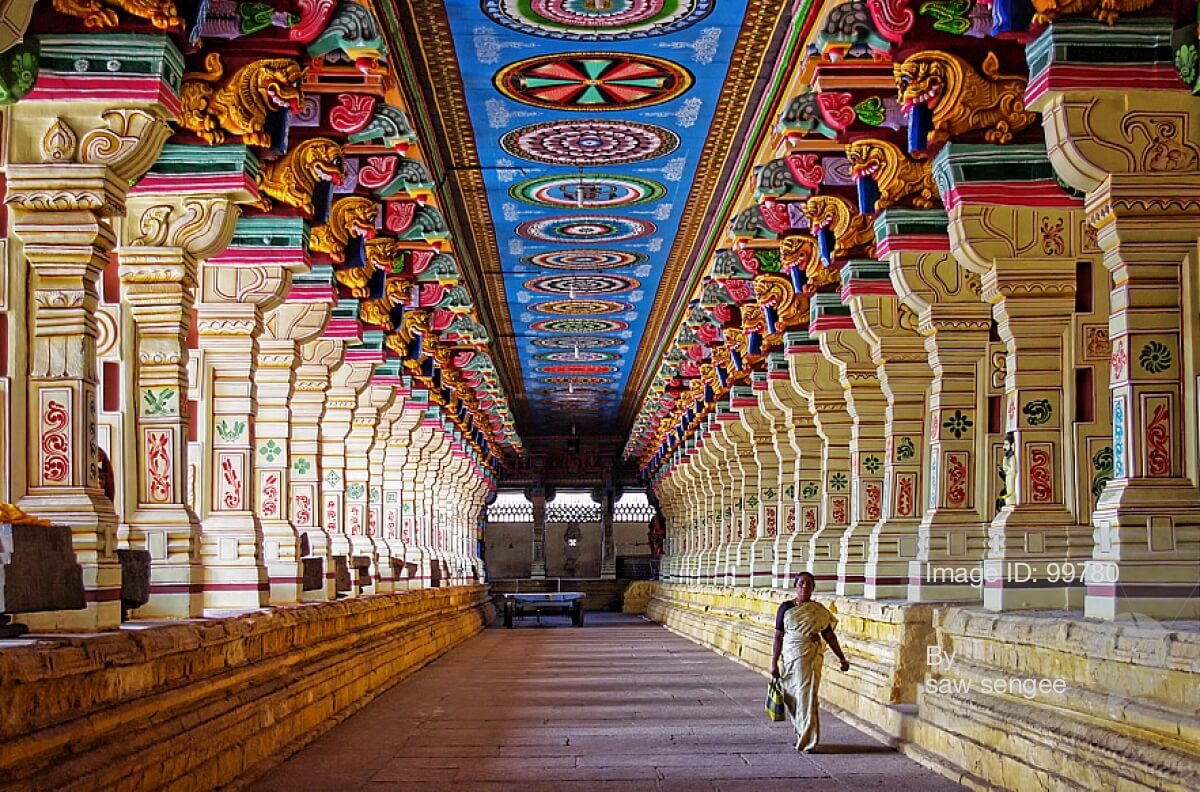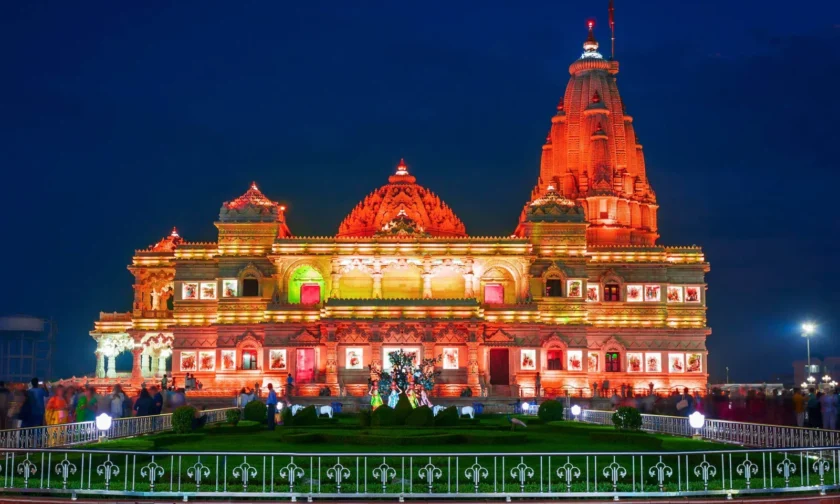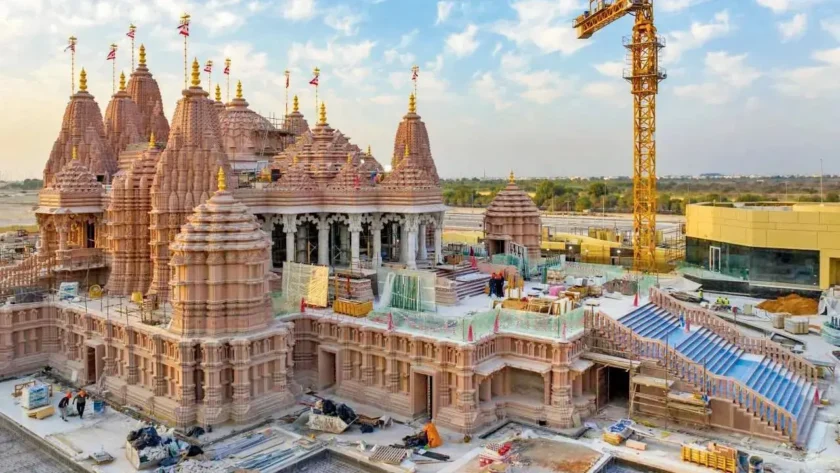New Delhi: Embarking on a journey through South India’s temple trail offers an unparalleled glimpse into the region’s spiritual, architectural, and cultural heritage. This South India’s temple trail takes you through Tamil Nadu, Karnataka, Kerala, and Andhra Pradesh, each state boasting an array of temples that are not only places of worship but also masterpieces of art and engineering. The richness of South India’s temple trail lies in the diversity of architectural styles, the historical significance, and the vibrant traditions that have been preserved for centuries.
Tamil Nadu: The Cradle of Dravidian Architecture
Tamil Nadu is often considered the heart of South India’s temple trail, renowned for its Dravidian-style temples characterized by towering gopurams (gateway towers), intricate carvings, and expansive courtyards.
Madurai’s Meenakshi Amman Temple The Meenakshi Amman Temple in Madurai is a stunning example of this architectural grandeur. Dedicated to Goddess Meenakshi and Lord Sundareswarar, the temple complex spans 15 acres, featuring 14 gopurams, with the tallest rising to 170 feet. The Hall of Thousand Pillars (Ayiram Kaal Mandapam) is a marvel of stone craftsmanship, with each pillar adorned with intricate sculptures.
Thanjavur’s Brihadeeswarar Temple Another gem is the Brihadeeswarar Temple in Thanjavur, a UNESCO World Heritage site. Built by the Chola emperor Raja Raja Chola I in the 11th century, this temple is a testimony to the Chola dynasty’s architectural prowess. The temple’s vimana (tower) soars to 216 feet and is crowned with a massive monolithic cupola. The frescoes and sculptures inside depict the rich cultural and religious tapestry of the time.
Kanchipuram: The City of Thousand Temples Kanchipuram, known as the “City of Thousand Temples,” is another pivotal destination. The Ekambareswarar Temple, dedicated to Lord Shiva, is particularly notable for its sprawling 25-acre campus and the ancient mango tree believed to be over 3,500 years old. Kanchipuram’s temples are also a haven for textile enthusiasts, famed for their exquisite silk sarees.
Karnataka: A Blend of History and Devotion
Karnataka’s temple trail offers a mix of architectural styles and historical eras, from the ornate Hoysala temples to the grandiose structures of the Vijayanagara Empire.
Belur and Halebidu The twin towns of Belur and Halebidu are home to some of the finest Hoysala architecture. The Chennakesava Temple in Belur, dedicated to Lord Vishnu, is renowned for its intricate sculptures and friezes depicting scenes from Hindu mythology. Halebidu’s Hoysaleswara Temple, dedicated to Lord Shiva, mirrors this artistry, with its detailed carvings that have stood the test of time.
Hampi: The Ruins of Vijayanagara Hampi, the erstwhile capital of the Vijayanagara Empire, is a UNESCO World Heritage site that offers a glimpse into a bygone era. The Virupaksha Temple, dedicated to Lord Shiva, is among the oldest and most prominent structures in Hampi. The temple’s annual chariot festival draws thousands of devotees and tourists alike.
Mysore’s Chamundeshwari Temple Perched on the Chamundi Hill, the Chamundeshwari Temple in Mysore is another significant landmark. Dedicated to Goddess Chamundeshwari, an incarnation of Goddess Durga, the temple is a blend of religious significance and scenic beauty, offering panoramic views of Mysore city.
Kerala: Serenity and Spirituality
Kerala’s temples, often nestled amidst lush greenery, reflect the state’s tranquil and harmonious spirit. The unique architectural style, featuring sloping roofs and woodwork, is adapted to the region’s climatic conditions.

Guruvayur Temple The Guruvayur Temple, dedicated to Lord Krishna, is one of the most important pilgrimage sites in Kerala. Often referred to as Bhuloka Vaikuntha (Heaven on Earth), the temple’s rituals and festivals, especially the annual Guruvayur Ekadasi, attract devotees from all over the country.
Sabarimala Sabarimala, situated in the Western Ghats, is another major pilgrimage destination. The temple, dedicated to Lord Ayyappa, is known for its rigorous pilgrimage season, where millions undertake a challenging trek through dense forests to reach the shrine. The annual Makaravilakku festival is the pinnacle of the pilgrimage, drawing millions of devotees.
Padmanabhaswamy Temple In Thiruvananthapuram, the Padmanabhaswamy Temple stands as a blend of Dravidian and Kerala architectural styles. Dedicated to Lord Vishnu, this temple gained international fame for its hidden vaults containing immense treasures. The temple’s intricate murals and the reclining posture of the deity are awe-inspiring.
Andhra Pradesh: A Confluence of Faith and Culture
Andhra Pradesh’s temples are a blend of grandeur and spiritual fervor, drawing influences from various dynasties that ruled the region.
Tirupati Balaji Temple The Tirupati Balaji Temple, located in the hill town of Tirumala, is one of the richest and most visited temples in the world. Dedicated to Lord Venkateswara, an incarnation of Lord Vishnu, the temple is known for its elaborate rituals and the annual Brahmotsavam festival, which sees millions of devotees flocking to the shrine.
Srisailam The Mallikarjuna Temple in Srisailam, dedicated to Lord Shiva, is one of the twelve Jyotirlingas and holds immense religious significance. Nestled in the Nallamala Hills, the temple’s serene setting adds to its spiritual ambiance.
Simhachalam The Simhachalam Temple, near Visakhapatnam, is dedicated to Lord Narasimha, an incarnation of Lord Vishnu. The temple’s unique architecture, combining elements of both Dravidian and Kalinga styles, and its annual Chandanotsavam festival, where the deity is covered in sandalwood paste, make it a notable pilgrimage site.
Traversing the temple trail of South India is not just a journey through architectural wonders, but also a profound spiritual odyssey. Each temple, with its unique history, legends, and traditions, contributes to the rich tapestry of South India’s cultural heritage. Whether it’s the majestic gopurams of Tamil Nadu, the intricate carvings of Karnataka, the serene sanctuaries of Kerala, or the grandiose shrines of Andhra Pradesh, the temples of South India offer a compelling narrative of devotion, artistry, and historical continuity. This trail is a testament to the region’s enduring legacy and its deep-rooted spiritual ethos, making it a must-experience journey for any seeker of history, art, and spirituality.





